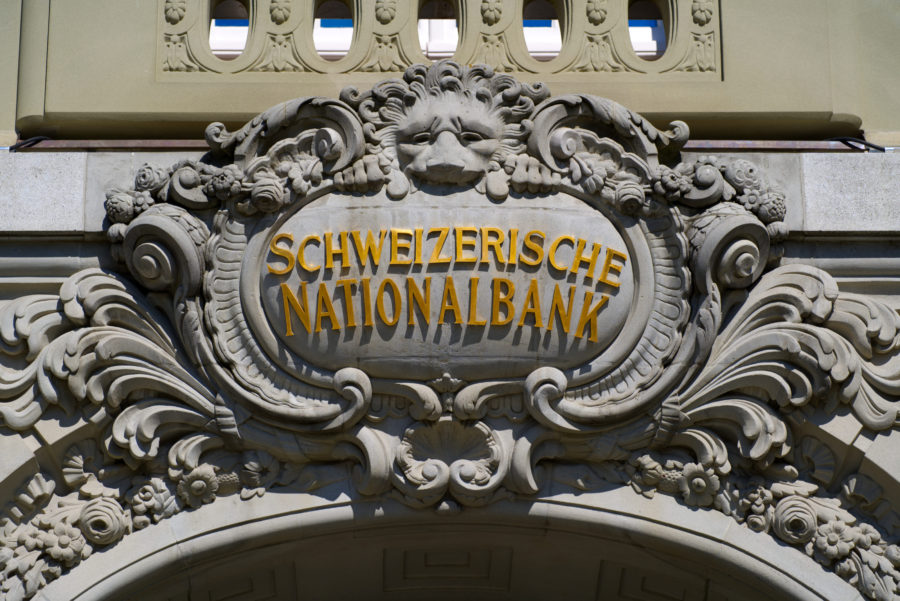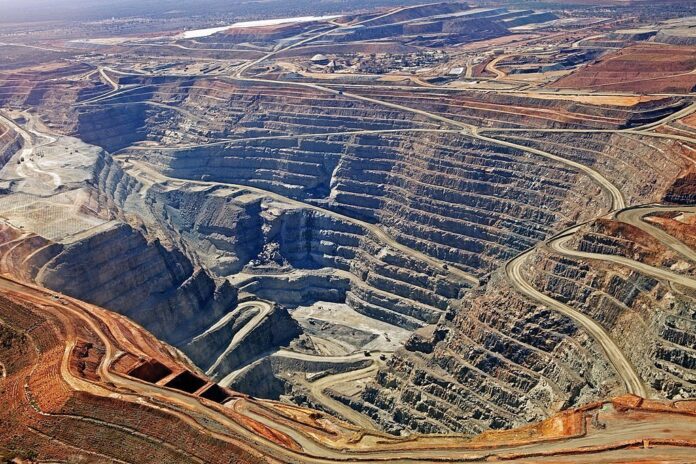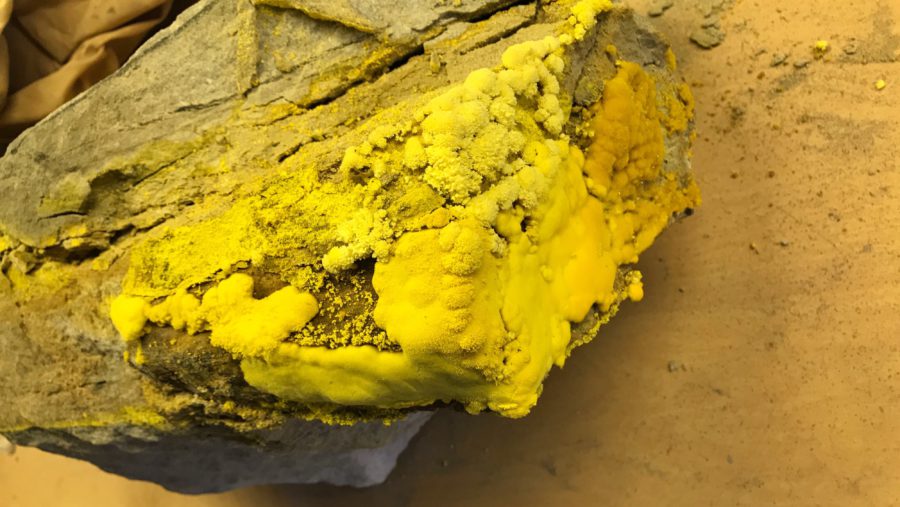The Metals Report: What is Pro-Or Inc. and how is it tapping North America’s platinum group metals (PGMs)?
Sylvain Boulanger: Pro-Or Inc. (POI:TSX.V) is a clean technology company that uses a patented chlorination process to recover PGMs from recycled automobile catalytic converters. The company currently operates a small-scale industrial plant that recovers platinum, palladium and rhodium. The process recovers more than 97% of PGMs from a typical catalytic converter. Our PGM recovery process is much less capital intensive, with a much quicker turnaround than conventional recycling or smelting alternatives. Our company goal is to become the global leader in sustainably recycled precious metals for the automobile industry. Our technology can apply to a number of different metals, but for now, Pro-Or is focused on dry solid-phase extraction of PGMs because those are high-value, in-demand metals that are widely available from the automotive recycling industry. While our process recovers other base metals, the main value is in the PGMs.
TMR: Can you give us an explanation of how the technology works and the chemistry involved?
SB: I’ll try to skip a Ph.D. chemistry course and give you an example that people will be able to remember. Our process starts with removing the ceramic catalyst material from the spent catalytic converter. The ceramic is ground to powder, combined with additives and processed through a rotating reactor. Inside the reactor, we create a chlorine gas environment. The end product of our process is a PGM salt.
I used to say that we make a valuable table salt. Its consistency is similar to the salt that you have on the table. And like table salt, PGM salt is water soluble. PGMs in the metallic phase are extremely resistant to temperature and corrosion; that’s why they are used as catalysts. However, when converted to salts, it is possible to separate PGMs and other metallic materials from the non-water-soluble ceramics. The process uses filtering to remove the non-metallic material from the dissolved salts.
TMR: Once you have the PGMs separated from the ceramic, what is the next step?
SB: The process includes a resin adsorption step, which removes the metal from solution. After the resin is burned, the collected metal is a fine, high-quality powder containing all the PGMs. This powder is sent to the refiner to isolate and refine the individual PGMs before final processing into the finished product, which is usually a new automotive catalyst.
TMR: Does the feedstock vary geographically or by catalytic converter source? If so, does your process easily adapt to changing feedstocks?
SB: PGM content varies by feedstock. Feedstock is influenced by the car manufacturer, model, year, engine size and so on. Manufacturers will vary the platinum and palladium content to achieve the emission control requirements. The ratio of PGMs will also change depending on the value of the metal at the time of manufacture. The cocktail of PGM metals can change throughout the year when PGM prices are volatile. Interestingly, we’ve found that most catalytic converters contain between 5–8% rhodium. This is important because rhodium is a very high value material. Back in 2008 the price of rhodium reached $10,000/oz. It is much lower now, but still high value. For all metals, our total recovery is at least 97%. That applies to the most valuable PGMs like platinum, palladium and rhodium, but also includes iridium and osmium that are used in some other catalytic converters, refractory materials and alloys.
TMR: Is your technology adaptable to converters from different regions and sources? Many precious metal producers spend a lot of time tuning their operations for a very specific feedstock, and then, if the “ore” varies they have extraction problems.
SB: We’re extremely fortunate because the manufacture of catalytic converters is fairly constant across the industry. There are only a few firms that manufacture the ceramics so we have a constant base. The different coatings that are used are always PGM based, so what we have is a very stable feedstock. Our recovery process has worked well regardless of the source in all the material we have tested so far.
In the prototyping plant, we watched for contaminants that may show up in the feedstock. The feedstock was and continues to be extremely stable and hasn’t had any bearing on recovery. Used catalytic converters are a very stable source of material compared to ore that comes from the earth, which can vary tremendously from mine to mine and even within a single deposit. As long as there are PGMs in our inputs, we are extracting the PGMs. The more PGMs there are, the more material we extract per kilogram. The operational cost is independent of the quantity of PGM, but is directly related to the quantity of feedstock.
TMR: Because your technology is based on reuse and recycling, it is a little different from the common resource investor mindset of mineral exploration and mine building. Does this present a challenge for Pro-Or to get its message out to investors?
SB: The reasons that investors are interested in PGM producers all apply to Pro-Or. Global demand for PGMs is growing because PGMs are required of “clean technologies,” but there are serious challenges to the traditional sources of supply. Historically, South Africa has provided approximately 80% of global PGM supply. But the African PGM mines are getting very old. These mines are up to three miles deep. Labor and infrastructure costs have risen and the costs of extraction have started to exceed the recent PGM market price. As a result, many companies are suspending operations. The other major PGM producer is Russia, which has its own set of challenges.
As catalytic converters usage grows globally, automotive manufacturers are in a bind as to where to obtain PGMs. That means there is a market opportunity for a more efficient recycling process. The current catalytic converter recycling process takes at least six months and you have to pay for the feedstock up front. With Pro-Or Inc., the entire process, from acquiring the material to processing and refining, takes less than eight weeks in the prototype plant. In a full-scale production setting, wherein we would use liquid-to-liquid separation, the time will be shortened to one or two weeks.
With recycling, our metal source is not a deep mine on another continent, but a scrap metal supplier located close to home. As a matter of fact, every car that is 10 years old or more is a potential source of PGMs. In North America, approximately 15 million (15M) cars reach end of life every year, and the value of PGMs in these cars can reach $2 billion ($2B). And you don’t have to dig a mineshaft to access that value. The number of recyclable catalytic converters is sufficient to supply the North American auto industries’ requirement for new cars. In other words, the best PGM deposit available to investors is in the form of catalytic converters rather than in-ground mineral deposits.
TMR: How is Pro-Or Inc. getting the technology to market? What does that rollout look like?
SB: Pro-Or is currently operating a small-scale PGM extraction facility. We are planning on building a four-reactor plant that we will run and operate as a showcase for the industry. We will use partners to supply feedstock to these reactors. We’re targeting one supplier per reactor to prove the technology on a commercial scale. The goal is that each partner will eventually install the equipment to become vertically integrated. Once the partners sign on, we will train their staff to operate the technology. It’s not complex, but we want to make sure that they understand how the system works. After construction, we will assist partners in ramping up production.
The overall goal of our technology and our solution is to simplify the recycling process. We will eliminate the long supply chain that includes wasted effort and needless transportation, storage, assessment and processing. Our solution offers a huge reduction in labor, time and energy compared to the existing PGM recycling processes.
In a large-scale production environment, once the partners make the PGM salt, it will be shipped to Pro-Or to be made into PGM metallic powder concentrate. Pro-Or will then work with refiners to take the metal powder and create new PGM alloys for use in catalysts. Johnson Matthey Plc (JMAT:LSE) is our partner, and performs the final separation and refining. The company also has an extensive distribution network, so it can offer recycled catalyst materials directly to the manufacturing industry. This reduces the number of organizations involved, because we won’t need to send the final product through a smelting facility or to ship it to South Africa for additional refining.
TMR: Where is Pro-Or in implementing the technology?
SB: We successfully completed the prototyping phase. We’re using the plant to process material on a small operational scale. At the corporate level, we are raising money to fund the construction of four additional reactors at a production facility. That facility will be a dedicated production facility operating 24/7. We are halfway to our goal of having four suppliers. The current plan is to have the plant up and running within eight months. Once we have finalized the private placement, we will start the construction of the plant, which will recover the equivalent of 200,000 catalytic converters per year. Based on the prefeasibility study, the construction cost of the complete operation will be approximately $8M.
TMR: What are the most important points about the Pro-Or story?
SB: Pro-Or is offering a unique technology to supply PGMs from existing sources. Our technology is dramatically more cost effective and energy efficient, and is quicker and “greener” than existing recycling processes. It’s an excellent alternative to developing new mines. Pro-Or fits into the existing supply chain between the automotive dismantlers and the catalytic converter manufacturers. The current industry cannot recover a large percentage of these precious metals, whereas our technology is able to recover PGMs cost effectively and quickly.
TMR: What other plans does Pro-Or have for its future?
SB: All our attention is currently devoted to building our first commercial production plant. At some point in the future, there may be many other applications for our technology. Our technology is not limited to recycled material. With our partner in South Africa, we have a technology with a different reactor that can process mine tailings. That process can also accept run-of-mine ore. We will investigate this by building a prototype plant in the years to come. But we don’t want to get distracted from our current plan to generate revenue. There are lots of other opportunities for potential application of our processing technology, including refining and recycling gold and rare earth elements. But at this time, we are completely focused on PGMs from automotive catalysts. It is a good place to be.
TMR: Thanks for speaking with us.
SB: It has been a pleasure.
Sylvain Boulanger is the president of Pro-Or Inc. and has managed the company since 2011. He graduated from École Polytechnique in Montreal in 1977 with a bachelor’s degree in applied science (electrical engineering) and worked for over 20 years in manufacturing, holding intermediate and senior management positions with General Motors, Paccar and Nike. He subsequently moved into supply chain management at the ALDO Group, La Vie En Rose and GENCO Distribution Systems, where he was vice president for 10 years.
DISCLOSURE:
1) J. Alec Gimurtu conducted this interview for The Metals Report and provides services to The Metals Report as an independent contractor. He or his family own shares of the following companies mentioned in this interview: None.
2) Pro-Or Inc. paid The Metals Report to conduct, produce and distribute the interview.
3) Pro-Or Inc. had final approval of the content and is wholly responsible for the validity of the statements. Opinions expressed are the opinions of Pro-Or Inc. and not Streetwise Reports or The Metals Report or its officers.
4) The interview does not constitute investment advice. Each reader is encouraged to consult with his or her individual financial professional and any action a reader takes as a result of information presented here is his or her own responsibility. By opening this page, each reader accepts and agrees to Streetwise Reports’ terms of use and full legaldisclaimer.
5) From time to time, Streetwise Reports LLC and its directors, officers, employees or members of their families, as well as persons interviewed for articles and interviews on the site, may have a long or short position in securities mentioned and may make purchases and/or sales of those securities in the open market or otherwise.




Comments
John
Another blow to the troubled South African platinum mining industry… Has anybody told AMCU about this???